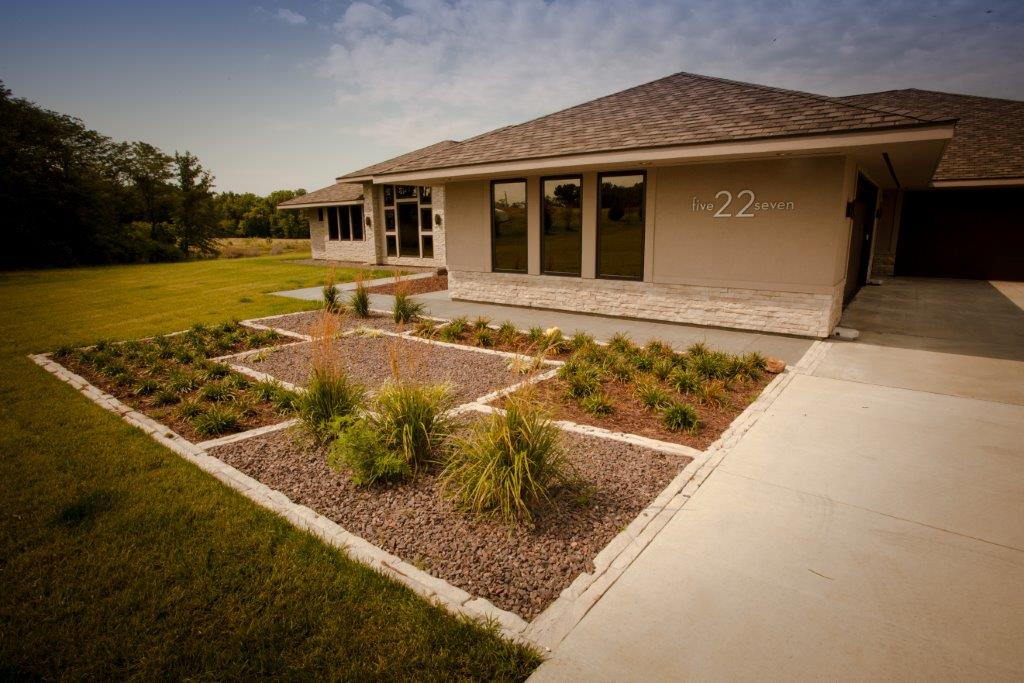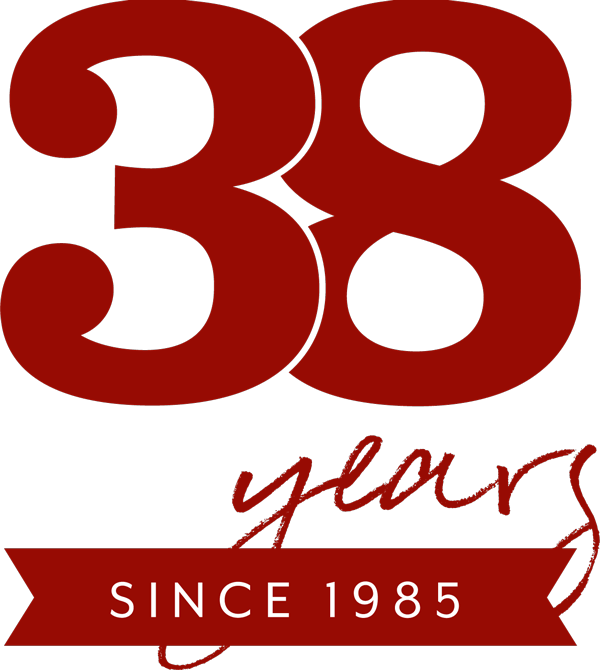If you look closely, you will see modern homes popping up all over town. With this style increasing in popularity, we have had to adapt our aesthetic to fit the design of the homes. It has been a fun couple years to research and design this growing trend. Contemporary landscape design has allowed us to expand our creativity and experiment with different materials and site layouts. Simplicity, key features, and traditionalism are some of the fundamental components of modern landscape design.
SIMPLICITY
For a landscape to have a more modern look to it, simplicity is an important consideration in the design. Clean, straight lines are the foundation of the design. Traditionally organic bed lines and patio shapes are now much more geometric. Material choices have shifted as well to be much more angular and linear. For example, in the past we tended to lean towards irregular or rustic stone for patio selections, whereas now, with a modern trend, we look towards large format, dimensional shaped pavers/stone in a simple pattern. With a “less is more” attitude, the design has fewer materials and focuses on repetition throughout the outdoor space.
KEY FEATURES
Focal points are given a lot of attention in all aspects of design but particularly in modern projects. As I mentioned before, simplicity is vital; therefore, key plant choices, boulder or hardscape placement, and points of interest are of high consideration. Rather than a bed full of traditional shrubs, for instance, your plants may include an incredibly unique specimen evergreen or Japanese maple in a bed with no other plants or simple groundcover interest below. The trees and shrubs chosen can still vary from very natural to more sculptural. “Modern” does not have to mean that the plants must be formal or manicured.
TRADITIONALISM
Traditional values are still taken into consideration in a contemporary outdoor space — modern design is more about utilizing traditional products in different ways. Natural materials such as stone, wood, metals, and elements such as fire and water are still the center of a design. A fire feature may be made of concrete rather than stone and may be gasburning rather than wood-burning, but it can still be a centerpiece within the space. A water feature may look less like a natural stream and more like a sculptural component. Smaller details such as mulch are commonly switched for something like a smooth black gravel in the landscape beds. In general, working with modern designs has opened our eyes to how much a small detail on material selection can make a big impact on the overall feel of an area, especially when keeping it simple and clean.
An outdoor space with a modern aesthetic opens the customer and the designer to a world of options, whether it’s rethinking how it was done in the past, trying a new product, or manipulating the shapes within the space. It has been an exciting process and the outcome of these more modern projects is unlike anything we’ve done in the past. We’re excited to do more with this budding trend.
JAKE FRINK
Jake Frink is a Columbia native who enjoys working and playing in outdoor spaces. He has a degree in plant science and landscape design from MU. With Rost Landscaping for nearly 18 years, Jake is the Design Manager. His natural talent for creating beautiful outdoor spaces gives him a huge sense of satisfaction. Jake considers himself to be a very lucky husband as well as a lucky dad of three great kids.
573-445-4465

